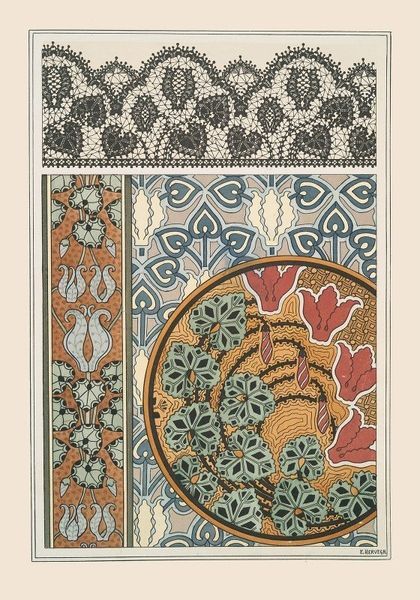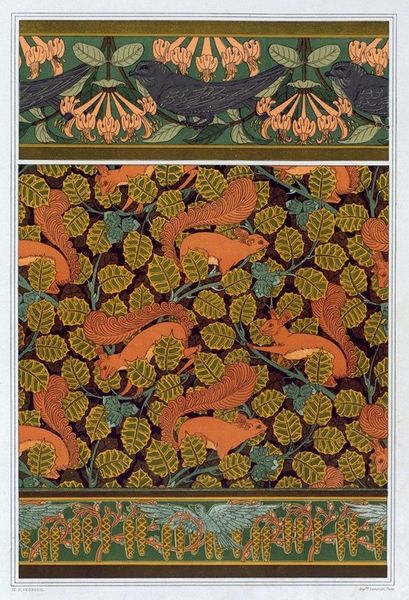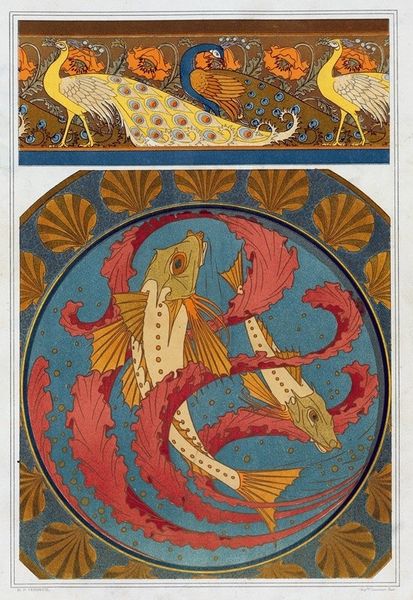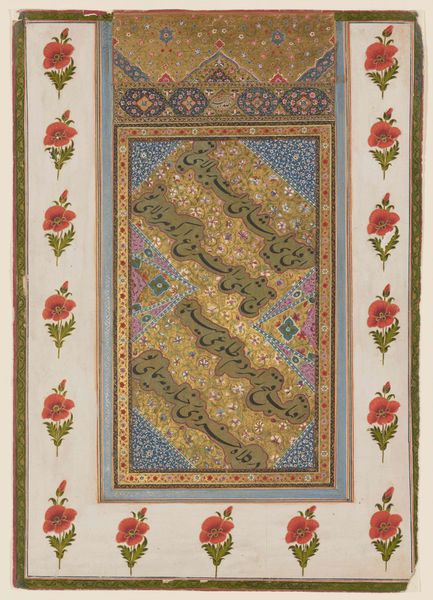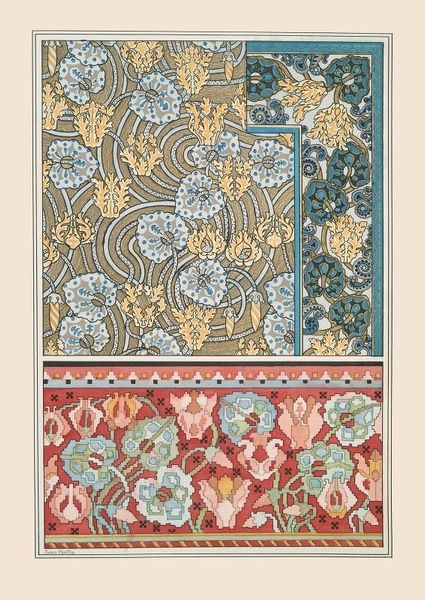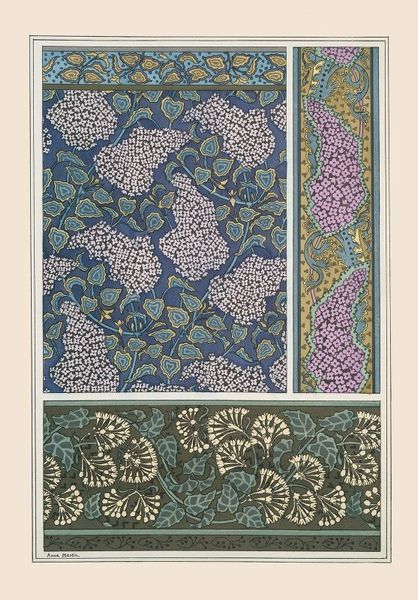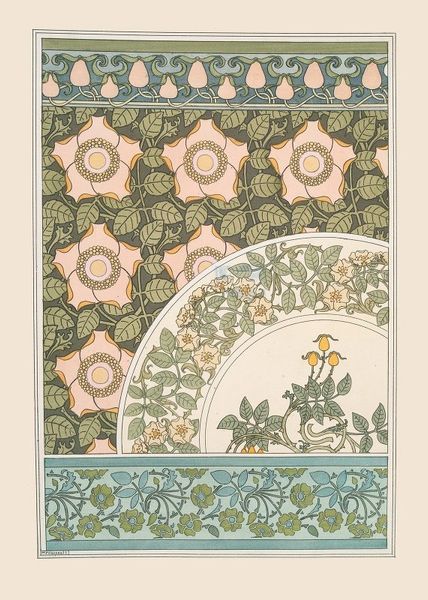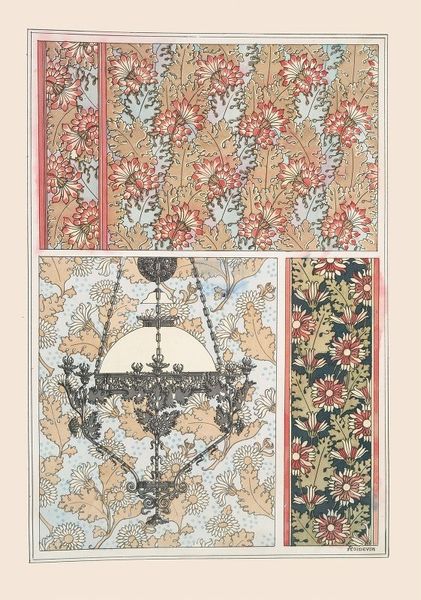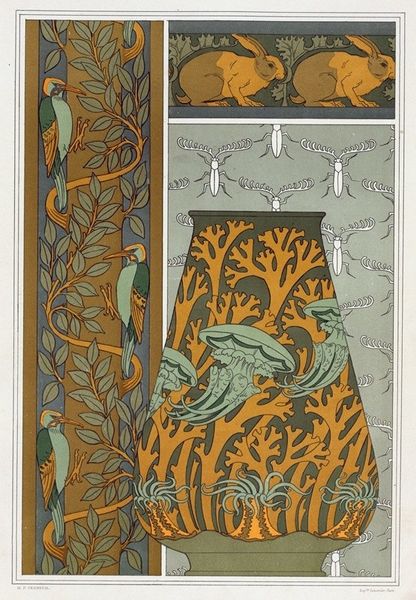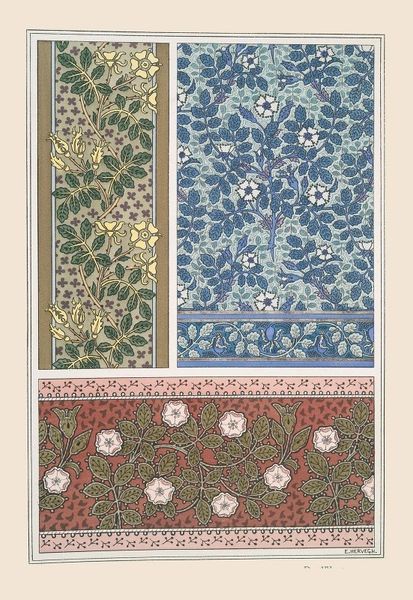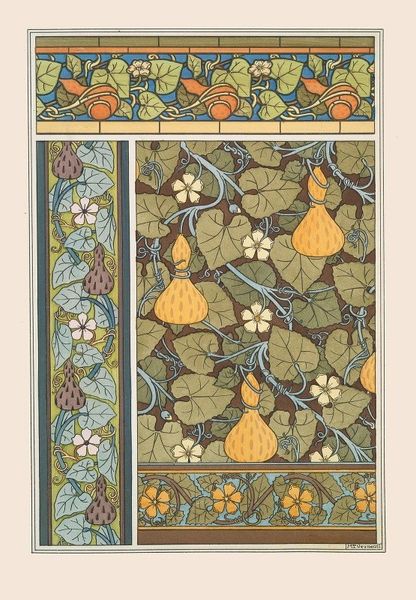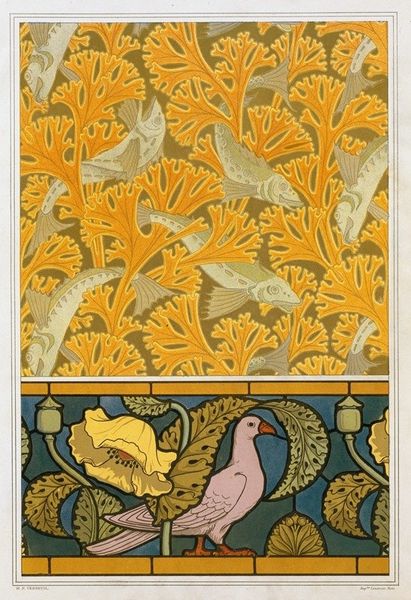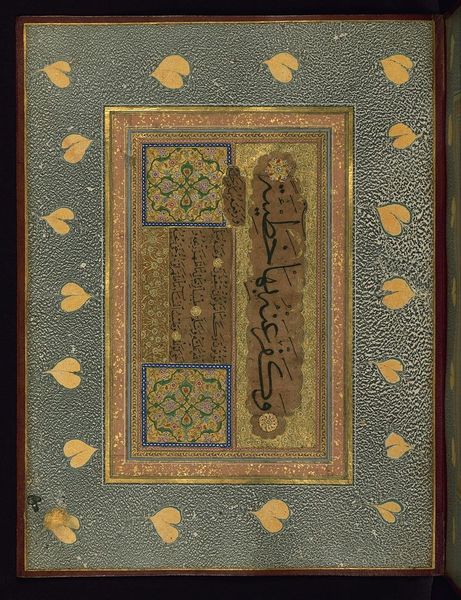
drawing, graphic-art, print
#
drawing
#
graphic-art
#
natural stone pattern
#
naturalistic pattern
#
organic
#
art-nouveau
# print
#
pattern
#
geometric pattern
#
abstract pattern
#
ethnic pattern
#
organic pattern
#
repetition of pattern
#
vertical pattern
#
pattern repetition
#
decorative-art
#
layered pattern
Copyright: Public Domain: Artvee
Curator: This print, titled "Paons dans les sorbiers, pochoir; poissons et algues, bordure" comes to us from 1897. It's the work of Maurice Pillard Verneuil. I'm particularly struck by its vivid decorative elements. What captures your eye first? Editor: The repetition is mesmerizing, almost hypnotic. The turquoise and greens create a cool, calming sensation, despite the intricate detail. It feels very stylized, yet simultaneously organic. Curator: The style certainly aligns with Art Nouveau, emphasizing organic forms. Verneuil was deeply involved in the decorative arts, designing wallpapers and textiles. This print likely served as a template for such designs. Editor: Knowing it's for mass production gives new insight into its repetitive pattern and flat colour palette. I'd argue it blurs the lines between "fine art" and functional design, wouldn't you agree? What statement was he making through making such design? Curator: Absolutely. The accessibility of design was a core tenet of the Arts and Crafts movement influencing Art Nouveau. The pochoir technique itself - using stencils - points to a streamlined production process accessible to the masses, democratizing beauty. Editor: And the motifs—peacocks, berries, fish. Are these simple decorations or loaded symbols? Are these motifs and their placement indicative of patterns within other forms of production happening at the time this art piece was produced? Curator: While stylized, these motifs resonate with Art Nouveau's love of nature. The peacock, for instance, could symbolize beauty and vanity but also immortality. The fishes, integrated at the bottom of the print, mirror this motif to add to the larger theme. It is an era defined by rapid industrialisation, I believe these can also be read as nostalgic symbols of a more 'natural' existence being made into commodities for a new, urban consumer base. Editor: That makes this piece incredibly complex and rather sobering when one examines its purpose of commercializing natural forms as patterns to sell and promote to a modern industrialized populace. It's interesting how the formal aspects, color, composition, take on a sharper significance knowing its intended consumption. Curator: Precisely. Studying how materiality and composition relate to social intent exposes art's place in broader economic systems and I think we see the results of the exploration here today. Editor: I think you're correct. Understanding an artwork's context enriches how we see its forms and ultimately alters our interpretation of design’s purpose and the work itself.
Comments
No comments
Be the first to comment and join the conversation on the ultimate creative platform.

